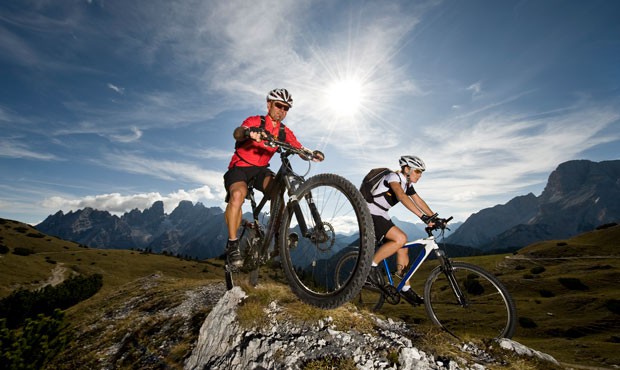Hit the trails running while taking care of yourself
Dec 11, 2014, 7:52 PM | Updated: Jan 21, 2015, 6:50 pm
Listed as one of National Geographic’s ‘Best US Hiking Cities‘, Phoenix is home to over 180 miles of hiking trails. Some are simple and relaxing, others are rough and tough. Many Weekend Warriors have turned to trail running to break a sweat. But unless you take proper precautions, you may find yourself running on the fast track to pain.
The biomechanics of running require a person to essentially jump from one foot to another. The downward force of each stride causes the legs to absorb two to three times a person’s body weight every time their foot hits the ground. The body needs to repair and regenerate after such repetitive loading of the leg muscles and tendons. But, when a person does not allow for adequate recovery time and outstrips his or her body’s ability to repair the underlying damage caused by running, injury can occur.
Stress fractures, which are tiny cracks that develop in the bones of feet, ankles and legs as a result of overuse, are among the most common running injuries. Runners also face a variety of injuries related to the breakdown of tendons and ligaments, such as:
- Patellar tendinosis – injury to the tendon connecting the kneecap and shinbone;
- Illiotibial band syndrome – tightening or damage of the ligament that extends from the hip to below the lateral aspect of the knee;
- Medial tibial stress syndrome, also known as shin splints – pain and soreness along the front and inner portions of the lower leg; and
- Achilles tendiniosis – localized pain near the back of the heel.
Preventing running injuries is best achieved by giving the body enough time to heal and regenerate between workouts. Being consistent in how much and how often you run, gradually increasing distance by no more than 10 percent each week, proper stretching, and wearing appropriate footwear that is replaced every 250 to 500 miles can go a long way toward preventing running injuries.
Most outdoor training sessions focus on uphill running, but knowing the proper techniques of downhill running is just as important. Ian Torrance, a running coach with McMillan Running suggests:
- Stay calm. Don’t force your stride. Keep your core tight, but legs, glutes, shoulders and arms relaxed. Work within the parameters of your own range of motion and let gravity do the bulk of the work.
- Don’t overstride. This will cause braking, slowing your progress and place undo stress on the knees and back.
- Increase your cadence. Imagine taking light, quick steps. As the slope increases, you’ll need to maintain a forefoot landing.
So, are you ready to hit the trail running? Here are five trails worthy of Weekend Warrior status.








